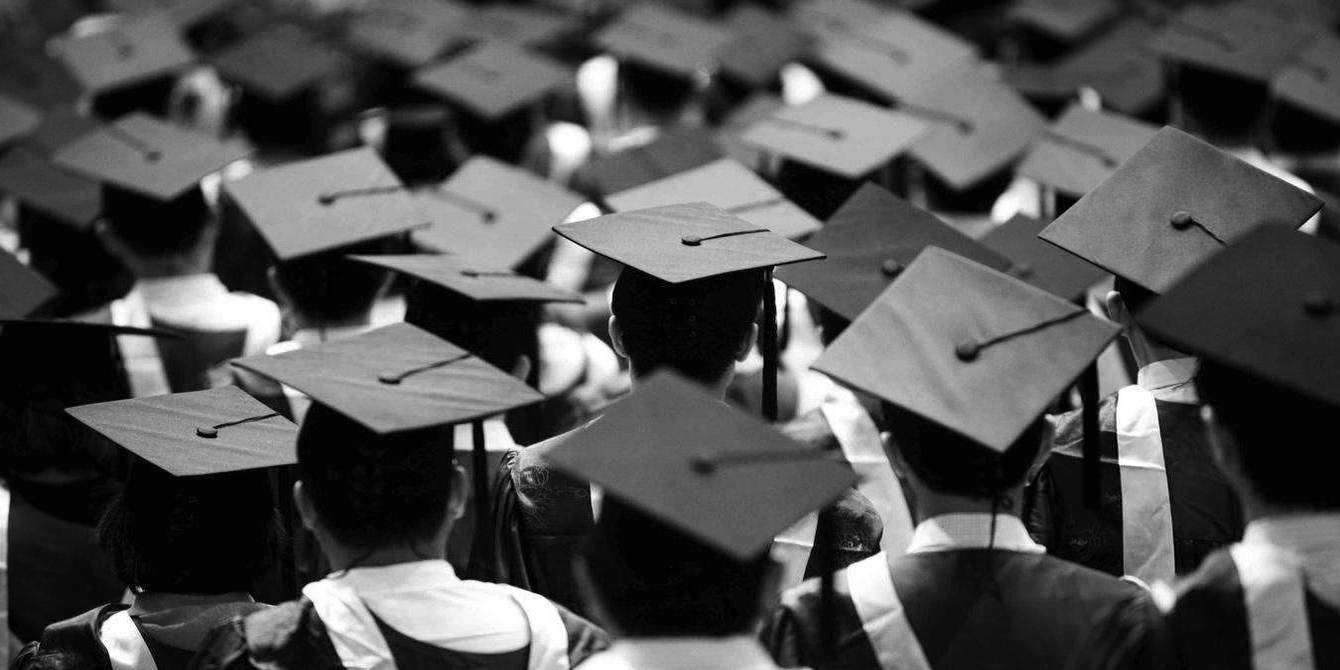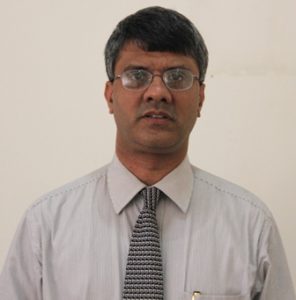
While there is much talk of Industrial Revolution 4.0, it is important to recognise that India first should endeavour to ensure a basic international standard expected in its Universities or Institutions operating at National, State and Regional level, writes Prof Y V Satya Kumar, Former Dean-Academic Planning & Quality Assurance, Rayat-Bahra University, for Elets News Network (ENN).

India is at the crossroads of making a leap into a higher orbit and enter premier league of the world based on its strong human resources from a large population and seven decades of sustained efforts to (re)establish itself in various sectors of economic and intellectual activity. Indian universities are finding it difficult to grab a position among top 100 or top 200 Universities of the World. Some of the generic challenges observed are at level of operation or control of these universities or institutions and may serve as an input in prioritising going ahead.
Rich Heritage
India’s Higher Education had its rich heritage starting millennia ago with many universities or centres of learning including:
- Varanasi in Uttar Pradesh, Nalanda in Bihar (in Northern India);
- Vikramshila in Bengal, Pushpagiri in Odisha (in Eastern India);
- Nagarjunakonda in Andhra Pradesh, Kancheepuram in Tamil Nadu (in Southern India);
- Taxila or Takshasila in Gandhara, Valabhi in Gurata (in Western India);
India had thus formal Centres of Learning with residential programmes much earlier than the opening of universities in the Western Hemisphere starting with Egypt, later in England and then the US. India’s past glorious learning hubs attracted International Scholars centuries ago.
As it is well known under the British rule, a very deliberate, sustained and successful attempt has been done to do away with this rich heritage of teaching-and-learning in India, so that the Western mode of learning could take root in India and consequent indoctrination and subdual of indigenous knowledge. Thus also the regard for and influence of a teacher, who held utmost importance along with priests and judges in keeping social order and societal value systems, and ethics slowly got withered in favour of the power of money and holders of physical resources.
This does not mean India did not have its own significant contribution to the World body of knowledge by the way of Philosophy, Law, Governance, Mathematics, Astronomy, Physics, Chemistry, Architecture, Materials and Metallurgy with stellar scientific brilliance by Aryabhatta, Ramanujam, Raman among other Indians over last two millennia. It is no secret that 20th Century’s most significant Scientists in areas of Quantum Mechanics, Atomic Energy and Astronomy like Einstein, Oppenheimer had gleaned insights from age-old Hindu Philosophies on Matter, Space and their Existence and Evolution.
Just as well it is known by now that India had preceded Europe and England with its own contribution in developing sub-fields of Trigonometry and Calculus in Mathematics.
Infrastructure after Independence
Now the overemphasis on modern instruments and experimental methodologies in scientific discovery meant it took time for India to reorient its resources after independence for establishment of Modern Institutions of Learning, Inquiry and Discovery in the form of National Academic Institutions and National Research Labs (such as IISc, IITs, IISERs, IIMs, NITs, NIDs, NITTRS, AIIMS, NIPERs, NITIE, NIFTs, NIFFT, TIFR, TISS, BHU, AMU, BITS-P, ACSIR, IIST, HBNI, ICAR, CSIR Labs, DST Labs, DAE Labs, DoS Labs, DSIR Centres, DIPP Institutions, UGC-IUC). Dozens of Central Universities have also been set up along with similar numbers of new IITs, NITs, IIMS and AIIMS in different States in last decade plus alone.
After Economic liberalization in 1991 under the stewardship of Prime Minister Narasimha Rao and Finance Minister Manmohan Singh occurred to overcome a crisis of impending default in balance of payments, India opened up various Strategic and Social Sectors to Private Enterprise in a big way. This allowed Private Universities (under State Legislature Acts), Private Deemed Universities (under Central recognition), Private Colleges (with affiliation State Govt Universities) and Private Autonomous Colleges to thrive in the last two and half decades in comparatively big numbers (hundreds of Pvt Universities and Thousands of Private Professional Colleges) across all geographies of India.
In part, this happened due to the assessment by the Central Government to steer private investments in higher education, technical education, medical education and management education so as to rapidly increase GER (Gross Enrollment Ratio) to a decent level as India is seen to be lagging its peer countries around the World, much less the Western World. However this rapid increase of Institutional growth also saw an unintended consequence in some-to-severe dilution of standards of preparation levels of entering Students, curricula, assessment and evaluation processes, Faculty quality and motivation levels, Administration and Governance rigor and much worse presented a set of continuing Challenges of a new kind to the Central Government.
Categories of Challenges
National Institutions: They are marquee Institutions with most severe competition for admission into them. They are very well provided for in terms of lab infrastructure, campus amenities, faculty quality, student competence, international reputation, good administrations, broad functional autonomy and requisite Government support. However, they continue to lag international peers in various ranking systems due to a lack of quantity in Quality Research output, overburdening of their teachers in class load due to severely increased student numbers arising out of regulatory prescriptions for social equity in access, inability to attract sufficient Indian faculty due to massive and continuing brain drain of the best UG, PG and PhD graduates abroad for better economic and professional opportunities and negligible international student enrolments or international faculty on their roles. They are also yet to go for significant linkages and collaborations with local industry and national research institutions in solving problems and issues affecting local and rural populations and innovations for their better future and currently providing a major component human resources for the best of the industry and academia in Western Nations.
State Government Universities: Generally speaking, universities operated by State Governments (i.e. Provincial Governments) corruption in terms of Faculty and Staff Appointments, laggardness on the part of Faculty (in permanent positions until retirement at around 60 years) in being even marginally active in research and displaying strong teaching motivation and caste-based alignments in appointments, affiliations and in governance seem to be important challenges. These challenges persist despite them providing state subsidized affordable education to meritorious students that clear various entrance exams or other assessment schemes. While Central Government is concerned about their operational efficiency, it is not too easy for them to intervene due to the federal structure of Indian Democracy, where Provincial Governments enjoy a certain degree of autonomy in all aspects. However below-par environments in some such universities along with structures, philosophies and practices have been undergoing serious reform last few years in States like Bihar, Jharkhand, Chhattisgarh with the realization of importance of quality mind-sets and practices with integrity in all aspects of Governance and Administration.
State Private Universities: As already mentioned although they are established in hundreds in last two decades by different State Governments, they suffer from moderate to very serious credibility issues in terms of their operational modalities and implementation effectiveness of processes in meeting expected outcomes. The relative autonomy they enjoy compared to private colleges affiliated to state universities is yet to be fully realised for their long term growth and utilisation of their potential.
Recently, a few of them like Manipal, BITS-Pilani have been given even a much greater degree of autonomy by recognizing them as Institutions of Eminence (along with the National Institutions or of National Importance IISc and IIT-Delhi and IIT-Bombay) based on their decades’ long history of standardized processes and yearning for greater outcomes. The worst of them are guided only by financial motives for the entrepreneurs that entered education enterprise without any long term outlook or awareness of its complexity and they are also the ones that find it difficult to sustain operations due to poor graduate output that generates a negative feedback for them.
Private Colleges affiliated to Universities/Autonomous Private Colleges: Generally speaking they are yoked to State Govt Universities in all aspects of Curriculum, Admission Criteria and Processes, Assessment and Evaluation Patterns, Exam Conduct and with some oversight in appointment of Faculty. Despite such stipulations some or many of these Colleges are underperforming and unable to attract sustainable enrolment and each year hundreds are being closed by Statutory Councils due to severe concerns of overall quality, staffing strength, graduate employability or knowledge levels. Autonomous Colleges enjoy a better autonomy than affiliated Colleges and the best of them are given Autonomous Status upon meeting certain criteria. The problem of corruption in State Universities naturally flows into the affiliated Private Colleges
All the pieces of the puzzle in terms of diversity of institutions, diversity of knowledge domains, aspirational population, motivated teachers, researchers and students, general regard across World for Indian Education and Innovation Systems and Government eagerness to launch India into full-fledged modernity are in place. Now it is high time for India to overcome all issues obstructing that destiny by way of avoidable compromises due to social, fiscal, operational, ethical and value-based considerations and achieve excellence and recognition that are overly due. For India to regain its Formal Glory, collective, concerted and synchronized efforts are required from all Stakeholders.





















